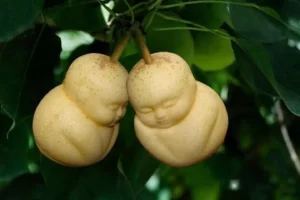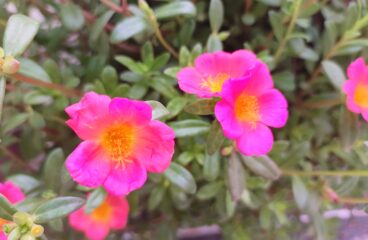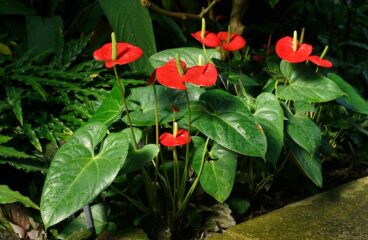

New 7 Benefits of Black-Currant Fruit | Growing Tips, Caring
Welcome to the GardenOnTop. In the post, we will know the new benefits of black currant fruit and also know deep detail about the plantation.
- About black-currant fruit
- How to grow black currant fruit in the container at home
- How to care for the black currant plant
- New 7 benefits of black currant
- How to collect ripe fruit (black currant)
- FAQ (Frequently Asked Questions)
Black Currant - Rarely Seen Fruit
About Black-Currant Fruit: One of the rarely seen fruit in the market and also an expensive fruit. Black currant fruit is also known as cassis. It is a deciduous plant in the family of Grossulariaceae and this family gives berries types of fruits. Black currant is native born in central and northern Europe or Asia. The scientific name of black currant is Ribes nigrum and belongs to the Grossulariaceae family.
Several countries produce black currant fruit such as New Zealand, Norway, Latvia, Poland and Scotland. Import and export make fruit expensive, that’s why fruits are so expensive. The price of black currant fruit in India starts from Rs 1000+ per kg. The taste is acrid and similar to blueberry, and gooseberry.


Seedling or Propagation
How to Grow Black Currant Fruit in Container at Home: Propagation is simple by using seeds and seeds are easily available in the market. Seeds are small with black to dark grey or similar to gooseberry seeds. While seedling, soil pH should be 5 to 7.5 with fertile soil. We have three types of compost for the seedling to fruit and also makes your plants healthy. Follow the below steps for seedling and repotting…
- Take one ceramic container of small size.
- Fill the John Innes (Seed Sowing Compost) into the container. John Innes (seed sowing) is the initial stage of the seedling.
- Make small holes in the soil and put all the seeds into those holes and cover it with the same compost.
- Give water properly and keep the container in a shady location until germination.
- Within 10 to 12 days, germination starts from the seeds. When the plants have grown to 3 to 4 inches, we need to transplant them into individual pots.


Transplantation
Repotting Germinated Plants: While repotting, we will use John Innes No 3 (Mature Plants Growth) compost. This compost is easily available in online and nearby nurseries. Add it into medium size pot and plant all the germinated plants (Plant’s size should be 3 to 4 inches). Composting is necessary after 30 to 35 days. After composting, give water and keep the pot in full sunlight.


Important (3rd Stage Repotting): If the plants get 3 to 5 feet tall, we need to repot them to a larger pot with another compost. Now, we will use John Innes No. 1 (Young Plant Compost). Use directly with normal garden soil.


John Innes No. 1 is the 3rd stage of composting so while blooming and fruiting give John Innes No. 1 compost. Easily available in online shops and nearby nurseries.


How to Care Plant or Tree: Easily grow in USDA hardiness zone 3 to 8. Or, below are the top caring tips for fast fruiting and blooming.
- Minerals and Compost: Initial to the last stage always use John Innes compost (Mature Plant Growth and Young Plant Growth). Composting is important for plant growth. Fertilizing regularly keeps your plants healthy.
- Temperature and Humidity: Initially, keep the plants in a shady and partial shaded location and after maturing, keep the plants in full sunlight. Recommended temperature is 20°C to 30°C. Morning sunlight gives the best result.
- Watering Timing: Regular watering is important in the summer time. While watering, check the soil moisture, if moisture is present in the soil, then don’t give water. Check the region where you live in, then according to your region give water. For watering. always use the watering can or garden hose.
- Pests and Diseases: If there are any kind of pests and diseases on the plants, then spray insecticide liquid with water on the plants. Root fungus tends to occur with excess watering. Most popular pesticide liquids like neem oil, nashak, green heal, and organic pesticide liquid. These liquids are easily available in online shops and nearby nurseries.
- Pinching and Cutting: Remove head, baby plants, unwanted branches, and faded flowers. Cutting is one of the main tasks for plant growth. Before the growing season makes your plants cutting free and take lots of blooming in the growing season. Always use cutting tools like scissors, hedge shears, and pruners.
Ultimate 7 Benefits of Eating Black Currant Fruit: There are lots of benefits of black currant fruit but we are showing only the Top 7 and healthiest benefits
- Good source of antioxidants and vitamin C.
- It boosts your eyesight and immune system.
- Black currant fruit comes with lots of vitamins like A, E, B-1, and B-5.
- Skin propitiator, you can apply on stinging, and dry skin for relief.
- Improves your heart and also protects your brain health.
- Improves your kidney health.
- Low blood cholesterol level


NOTE: Black Currant fruit, you can eat by capsule, dried, powder, and oils. We prefer to take only dried fruits because it’s natural without any other ingredients.
How to Collect or Harvest Fruit from Black Currant Tree: Black currant fruits are ready to pick, when fruits look dark blue or black colour. Winter is the blooming time and the fruiting time is mid-July to august. If planting starts from seed, you’ll need to wait for 2 to 3 years. The fruits grow along the stem and produce many fruits. The taste is acrid and similar to blueberry, and gooseberry. Fruiting is long lasting up to 2 to 3 months.
FAQ
Frequently Asked Questions: By adding an FAQ section, the user can easily find their particular query. If the query is not available, please do comment and we will respond to you as soon as possible.
Yes, we can grow seeds in the container (refer growing section).
Simply, composting is necessary and cutting is an important task.
John Innes are one of the best composts for black currant plants and tree.
Online shops like Flipkart, amazon…etc. Or nearby nurseries.
Slightly taste is similar but not the same.
After the fruits are ripe, you can harvest them or you can harvest them if the fruits look dark blue or black.
Lots of benefits like improved kidney, immune, and brain health. For more info, refer benefit section.
If you like this post don’t forget to share it with your friends and relatives and also subscribe to my newsletter for the instant update 🙂
Click to Read Recommended Post 😊
Let’s Grow Summer Flowering Plants 🙂
Lets Explore Tags


















































































